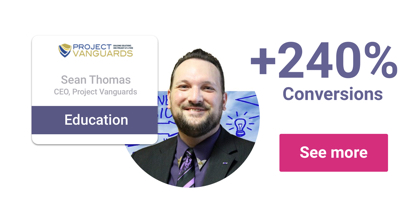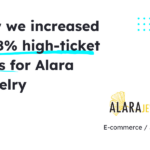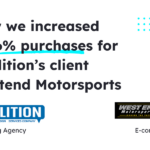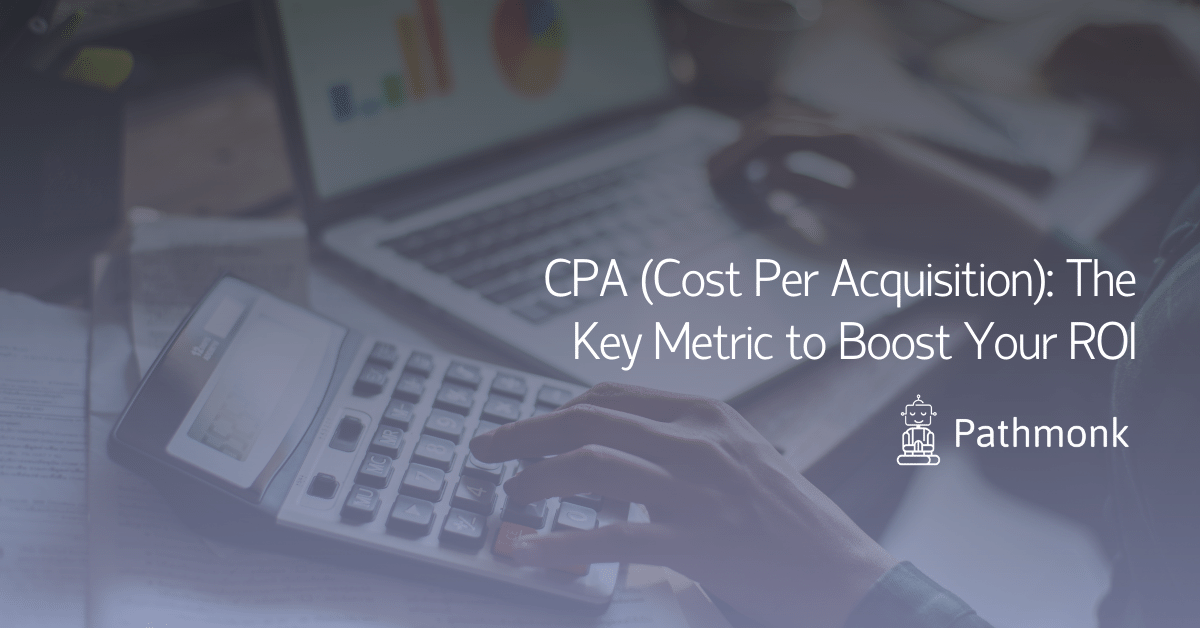
One of the basic, most reliable metrics used in sales is the cost per acquisition, or CPA. This number can help businesses make crucial decisions on how they do business and run marketing plans. While each business is going to have different goals and numbers, here are some basics to get you thinking about how you can boost your return on investment, or ROI.
What is CPA?
The CPA is a financial metric used to determine how much money is required to make one conversion. This term and metric are important to every industry, though it looks different for each. For some companies, the conversion is a physical sale of a product or service. Other companies count a conversion as a click on a site, a download, or an install.
There are different tactics to getting a conversion including pay-per-click advertising, sponsored postings, lead lists, email marketing, and more. Each can be beneficial and have a different influence on potential customers.
How to Calculate CPA
As mentioned, each company will have a different strategy on how they are utilizing leads and getting conversions. That information will be important in calculating the CPA for each route. The basic equation of cost per acquisition is:
CPA= total cost of a campaign/number of conversions
This equation is simple, but gathering the numbers requires a little more information than the simplicity implies.
A common place to use marketing dollars is Facebook. To put this equation into a real-world example, let us say that you run a company that sells jackets. According to your marketing budget, your business has $250 to invest towards sponsored Facebook ads. After the campaign ad expires, your analytics show that you sold 50 jackets from clicks on those ads. Calculating the CPA is taking that $250 and dividing it by 50 jackets, which equals $5.
The next question your business should be asking is whether that CPA is good or not. To answer this, you need to look at your goals and your bottom line. Some questions to consider are:
- How much does each jacket cost to make?
- What are the website costs?
- How much are the operating costs for the site support teams?
- Is the pricing on the campaign a profitable channel?
- Are you getting a fair price for shipping and handling costs?
All the costs of this strategy should be calculated to determine if this path is profitable for your company or not.
Another important thing to look at is your company goals. If you paid $250 for that Facebook campaign and had 100 click-throughs to get 50 jackets sold, that is good information. One goal for your company might be spreading brand awareness. If potential customers are clicking your ads, it shows that your marketing message is effective, and more people are learning about your business. Brand awareness conversions might look different, with the conversion being clicks instead of sales. In that case, the CPA would equal $2.50. If you have both goals, each is an important consideration in cost benefit analysis.
Using CPA to Increase ROI
The best way to increase return on investment, or ROI, is to decrease the CPA. This is done in one of two ways; either decrease the total cost of the marketing campaign or increase the number of conversions. Let us look at basic ideas for each of these strategies.
Generate better leads to grow your sales
Discover new strategies to unlocking a flood of high-quality leads from your website.
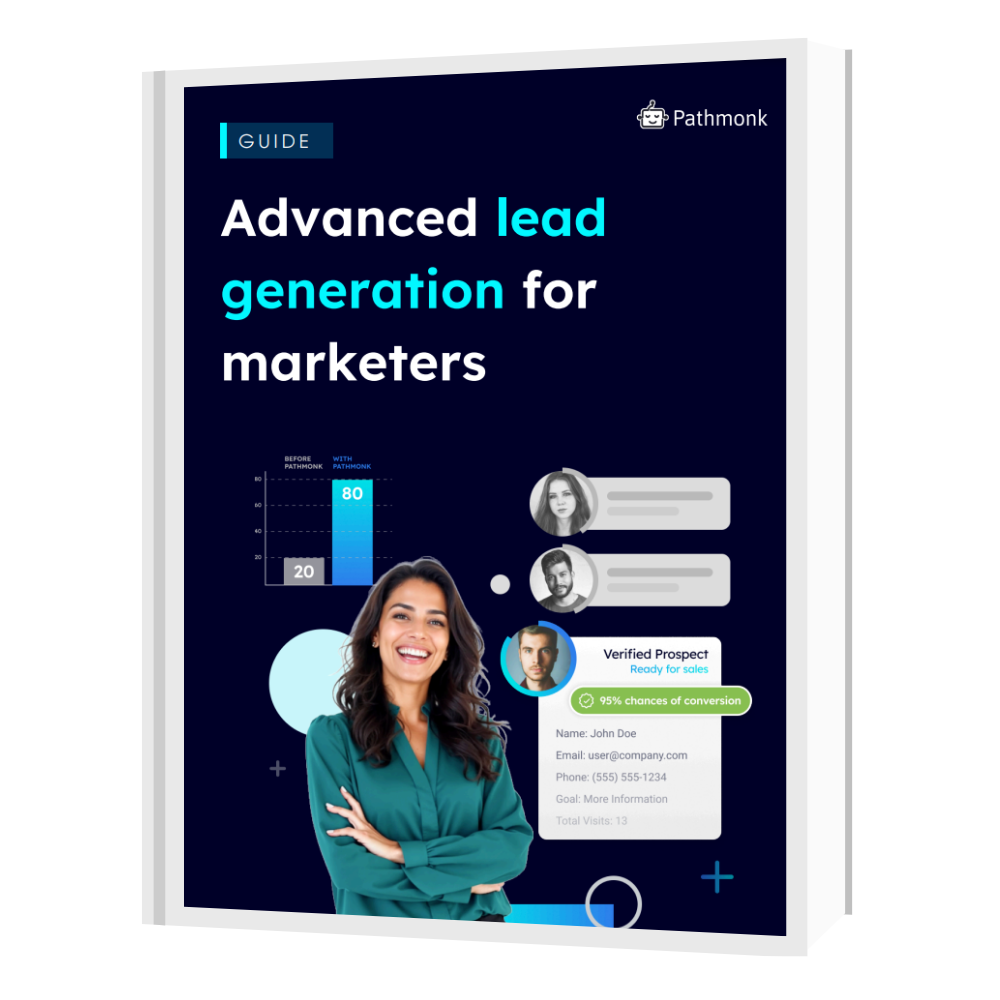
Decreasing the Total Campaign Cost
Most of this information will come from experimentation. There are many types of campaigns to try that will yield different results. If your conversion goal is to have potential customers fill out a form, you might try an email marketing campaign, sponsored pop-up ads on local news sites, and ads on the sides of websites. Researching prices and asking each site what their costs are gives a great starting point. This information can help you determine which of the total campaign cost will fit within your company marketing budget.
Within certain avenues there is variety too. Utilizing social media platforms will allow most companies to make some headway in conversions. Some of these tools are free while others will cost money. Hiring another employee or paying money to extend the reach of your posts will add to the total cost of the campaign.
Companies who are investing their marketing dollars into pay-per-click (PPC) can set their budgets with Google and then let it run as long as their budget allows. Hiring an outside agency to help set this up and run it will require more money for the campaign while learning it yourself or having an employee figure it out might cut some of the total cost down.
Another way to decrease your PPC costs is to increase your quality score with Google. When you have relevant keywords in your ads and enhanced UX, your ad is more clickable. This means that not only will it reduce your costs, but it will also increase your clicks and bring in more traffic.

Increasing the Number of Conversions
There are some simple, creative strategies that companies can use to increase their number of conversions. But first of all, learn how to measure your conversion rate.
Something as simple as changing the colors or wording on your messaging could help catch the attention of potential customers better.
The best strategies for increasing the number of conversions comes with some intentional planning to capitalize on the clicks you do get. Here are six basic areas of focus.
- Optimized landing pages. Landing pages are vital to conversion rates. This is your chance to make a great first impression. Have a pop-up offer, adjust your messaging, keep the page optimized, or have a prominent message displayed.
- Learn more about your visitors. When a person clicks through to your site, there are website tools to help you learn more about their visit. Some information you can learn is what pages are they visiting, how long they stay, and where does their mouse linger on the page. Utilize this information by capitalizing on areas of interest and make changes if necessary.
- Be clear and reliable. Site visitors abandoning their cart is at a rate of 68%. The most common reasons people do not complete their online purchases are from hidden charges, like shipping fees, and website technical issues. By being clear on flat rate or free shipping rates, your company can get customers through to a conversion. Having a reliable site will keep check out frustrations to a minimum and result in more sales.
- Retarget missed opportunities. Every company has people visit their website without becoming a customer. Using software to capture this information can bring a great opportunity to retarget those potential customers. Have a sales team or software use this information to reach out again offering a special price or try to reconnect somehow to catch their attention, and hopefully their business, again.
- Be consistent. When creating your marketing messages, stay consistent. Do not advertise different prices than those listed on your website or it will only turn customers away. Keep your keywords on brand and use those messages in your advertising. Search engines pay attention to these details, influencing your page position.
- Use targeted messaging strategies. Location based marketing tools can benefit a lot of smaller, local businesses to focus on their potential customers. Information is available for so many audiences including age, interests, gender, income levels, and occupations. Using this information to target your messaging to the right potential customers can increase your chances of conversions.
Finding ways to market creatively can increase the number of conversions too. Using some sort of messaging that strikes an emotional chord or is humorous can cause a lot of organic growth. As people share messages online or talk to their friends and family about your ad, product, or service, it increases curiosity. Word of mouth can be an extremely powerful marketing tool.
The basic guiding principle to having a better CPA is that when businesses spend less money to have a conversion, they stand to make a bigger profit, or ROI. Here are.
Learning Through Trial and Error
All the research and crunching numbers in the world can only get your company so far. Eventually, companies must start trying different campaigns to see what works best for them. Experiment with various marketing avenues and continually be analyzing each one’s CPA. Set up different campaigns and let them work for an amount of time that allows you to get an accurate feel for your company’s potential there.
If you have found successful campaigns, stay there. Allocate your main time and resources toward it so that the business can be profitable. There are usually ways you can expand on strategies in that campaign that will continue a company’s growth.
On the side, keep looking into new ideas and campaigns for ways to boost growth. Keeping a pulse on all the successful campaigns will help you utilize more than one strategy at a time. Hitting markets from more than one direction can increase potential conversions.
If you find that a campaign is not successful, cut your losses and move on. Every strategy and platform can teach you valuable information about your audience and what types of messaging work best.
Once you start understanding more about your CPA and what strategies work best, you can focus on using all that information to boost your ROI and build a more profitable business.
Understand your customer journey analytics
See how your users behave, find drop-offs, and receive actionable insights with AI.


